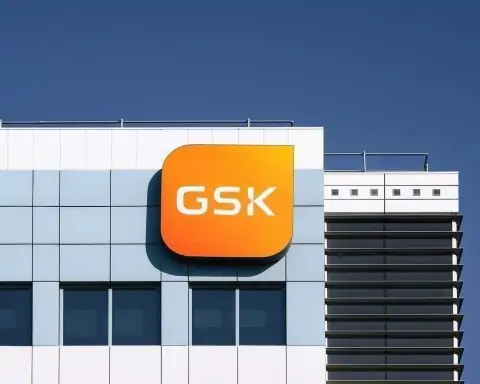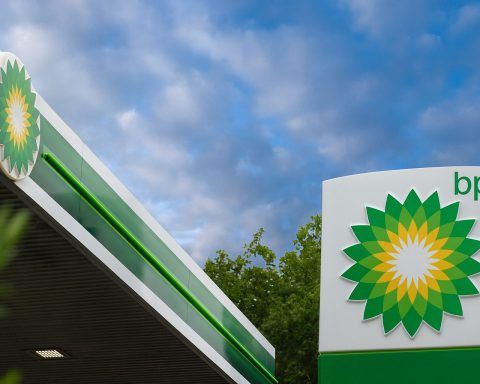- Stock Rally: DNN shares hit ~US$3.10 intraday on Oct. 28 and closed about $3.17 on Oct. 29 [1] [2], more than double its price at the start of 2025. The stock is up roughly 100%+ year-to-date, far outpacing major indexes [3] [4].
- Analyst Sentiment: All five analysts covering DNN rate it “Buy/Outperform,” with a consensus 12‑month price target around C$2.75 (≈US$2.00) [5] [6]. Notably, Desjardins (C$5.00) and Raymond James (C$4.35) recently set higher targets [7], reflecting bullish views on Denison’s project pipeline.
- Uranium Market: Uranium prices are at multiyear highs (~$82–83 per pound) [8] [9]. Global demand is surging – over 30 countries plan to triple nuclear capacity by 2050 [10] – while major producers like Kazakhstan and Cameco are cutting output [11] [12]. In the U.S., the government recently invoked the Defense Production Act to boost domestic uranium supply [13] [14].
- Key Projects: Denison’s flagship Wheeler River uranium project (Saskatchewan) cleared provincial environmental approval in Aug. 2025 [15] and is awaiting final federal licensing (hearings held Oct. 2025). Site prep could start in 2026, with first production targeted around 2028 [16]. Separately, Denison’s 22.5%-owned McClean Lake Joint Venture resumed production in mid-2025, mining ~250 tonnes via innovative SABRE technology and producing the company’s first yellowcake in 15 years [17] [18].
- U.S. Nuclear Policy: Washington is aggressively backing nuclear energy. An $80 billion U.S. reactor deal (Westinghouse/Brookfield/Cameco) was announced Oct. 2025 to power AI data centers [19]. DOE programs (e.g. Defense Production Act consortium) are strengthening America’s nuclear fuel chain [20] [21]. Such moves are driving investor interest in uranium stocks.
- Valuation & Risks: Despite the rally, some experts warn DNN’s valuation already assumes much of the good news. Rapid volume spikes and high institutional ownership (≈37% of float [22]) suggest bullish sentiment, but any uranium-price pullback or project delay could trigger volatility [23] [24].
Denison Mines has emerged as one of the year’s hottest mining stocks, fueled by a global “nuclear renaissance” and progress on its development projects. The company’s U.S.-listed shares (NYSE American: DNN) doubled in 2025 as uranium prices climbed; in mid-October they briefly hit a multi-year high near $3.35 [25]. After a bit of profit-taking, Denison has traded in the high-$2s range into late October [26] [27]. The recent surge was dramatic – for example, on October 28 alone the stock rose ~11% to about $3.10 [28] [29]. Even so, DNN remains extremely volatile, frequently moving ±10% in a day on shifting sentiment [30].
Denison’s market cap (≈$2.7 billion) now reflects investor bets on its future uranium production [31]. Its shares have outperformed peers: industry heavyweight Cameco (CCJ) recently hit ~$83 [32], NexGen Energy (NXE) traded near $9 [33], and U.S.-focused Energy Fuels (UUUU) leapt 23% in a week [34]. By contrast, smaller producers with new projects – like Denison – have enjoyed even steeper gains, echoing past uranium rush patterns where juniors outperformed majors. Still, analysts caution that much of this upside is “priced in” already [35].
Denison’s Operations: Wheeler River & Beyond
Denison is squarely focused on Canada’s Athabasca Basin, home to the world’s richest uranium deposits. Its flagship Wheeler River project (95% Denison-owned) is one of the largest undeveloped uranium assets. In August 2025 Denison secured provincial environmental-assessment approval for Wheeler River [36]. The final federal review is underway: Canadian Nuclear Safety Commission hearings on Wheeler’s licence (to prepare site/construction) took place in Oct. and Dec. 2025 [37] [38]. If approved, Denison plans to begin site preparation in 2026 and expects the Phoenix in-situ-recovery (ISR) mine to start up around 2028 [39]. Because ISR mining uses groundwater to dissolve uranium underground, Wheeler’s operating costs are projected to be very low (TS2.tech cites ~$11.70/lb) with IRRs exceeding 80% [40] [41]. Management notes these milestones “de-risk” the project and move Denison closer to producer status [42].
Aside from Wheeler, Denison holds stakes in nearby deposits. It owns 22.5% of the McClean Lake Joint Venture (with Orano), which includes the McClean Lake mill. In mid-2025 McClean Lake mining restarted via the innovative SABRE borehole mining method [43]. In July 2025 the JV shipped ~250 tonnes of ore and produced yellowcake for the first time since 2008 [44] – a development CEO David Cates called “a significant milestone” [45]. The McClean Lake mill is also processing third-party uranium (e.g. Cigar Lake under toll agreements). Furthermore, Denison holds ~25% of the adjacent Midwest uranium JV (Midwest Main/A deposits) and 70.6% of the THT/Huskie deposits near McClean Lake [46]. These assets, plus its Waterbury Lake claims, give Denison exposure to ~384,000 hectares in the Basin [47]. Collectively, Denison’s portfolio of high-grade projects and resumed production facilities provide the company with multiple near- and mid-term value drivers.
Uranium Market & Policy Tailwinds
Denison’s rally isn’t happening in a vacuum – it mirrors a broader uranium renaissance. Global nuclear power is enjoying a comeback for climate and energy-security reasons. For instance, COP28 (Nov 2023) saw 30+ countries pledge to significantly expand nuclear capacity by 2050 [48] [49]. The World Nuclear Association projects uranium demand will jump ~28% by 2030 [50] [51]. Meanwhile, supply is tight: current reactor demand (~180 million lbs/yr) far exceeds mine output (~130 M lbs [52] [53]), with stocks being drawn down. Key producers are cutting supply – Kazakhstan’s Kazatomprom plans a 10% output cut in 2026 [54], and Cameco has lowered its production forecasts due to mining delays [55].
This supply–demand squeeze is driving uranium prices sharply higher. By early Oct. 2025 spot price was around $82–83/lb, up from ~$64 in March [56] [57]. Even more, uranium contracts are locking in $125–130 with floors of $70–75 [58]. Price outlooks are bullish: for example, Citigroup sees uranium reaching $110/lb by 2026 [59]. A positive feedback loop is in play: higher prices improve economics for projects like Wheeler River, justifying richer valuations for companies like Denison.
Governments are also accelerating nuclear power efforts, which indirectly boost uranium equities. In the U.S., President Trump’s administration has signed off on massive nuclear initiatives. On Oct. 28, 2025 the Commerce Dept. announced an $80 billion contract with Westinghouse (Brookfield/Cameco) to build new reactors for AI data center demand [60]. This follows DOE moves invoking the Defense Production Act (DPA) to shore up domestic uranium fuel supply [61] [62]. In August, DOE launched a DPA “consortium” to mobilize industry and reduce reliance on foreign-enriched uranium [63] [64]. All these policy measures – from reactor financing to fuel security – underscore a renewed strategic value of the uranium supply chain. The net effect: a powerful tailwind for companies like Denison that stand to supply future uranium.
Expert Views and Investor Sentiment
Analysts and market-watchers are largely bullish on Denison, though not without caution. All five sell-side research outfits covering DNN have Buy/Outperform ratings [65]. MarketBeat reports that the average 12-month target is C$2.75 (about US$2.00) [66], versus the current ~$3.1–3.2 price. However, some analysts see a much higher ceiling: Desjardins Capital reiterated a C$5.00 target (~US$3.65) on the grounds of Denison’s high-grade assets and looming mine permits [67]. Raymond James similarly raised its target to C$4.35 in October [68]. On the margin, a few cautious voices note that DNN’s valuation is aggressive: even Denison’s CEO acknowledges that the stock’s recent rise “already prices in the good news” [69].
Investor sentiment indicators echo the excitement. Denison’s trading volume and options activity have spiked – for example, one day in mid-Oct saw ~36,000 call options trade (3.5× normal) [70]. Institutional ownership has grown as well (≈36–37% of the float, up from ~25% a year ago) [71]. In short-term technical terms, price momentum has been strong: even after a late-October pullback, DNN remains well above its key moving averages (50-day ~ $2.45 vs. 200-day ~$1.95) [72]. Some trading experts view DNN as a momentum favorite; for instance, stock-market commentator Martin Lo (MarketMinute) calls Denison a “prime beneficiary” of the uranium upswing [73].
That said, many pundits stress prudence. Uranium stocks can be explosive but volatile. As one market observer put it, “any uranium price pullback or project delay could spur volatility” in DNN’s shares [74]. With Denison still unprofitable (negative P/E) and no producing mine of its own yet, the stock’s gains reflect future promise more than current cash flow. Thus experts advise tracking uranium prices and permitting updates closely – while being aware that valuations may flex if any assumptions change.
Outlook: Near- and Long-Term Forecasts
Analysts’ models offer mixed near-term views. Technical forecasters like CoinCodex (Oct 30 data) predict a modest pullback: roughly $2.86 by late Nov. 2025 (−9.9% from current) before potentially rebounding [75]. However, over a longer 12-month horizon, the average target (~$3.15 [76] or C$2.75) is slightly below today’s levels, implying limited upside in the coming year by consensus. In practice, many expect DNN to track uranium prices: if fuel prices continue climbing toward $100+ (as some forecasts project [77]), Denison’s valuation could rise substantially.
On the bullish side, Denison’s own management aims to develop Wheeler River as Canada’s first ISR mine by 2028. If achieved, Wheeler alone could add ~12 million lbs of uranium output per year [78]. Some uranium investors extrapolate that such production, plus the recent restart at McClean Lake, could eventually justify stock prices far above current levels. (One contrarian analysis noted that Denison’s market cap is only ~9× the net present value of Wheeler’s projected output [79].) Conversely, delays at Wheeler or a dip in uranium prices (say back toward $60–70) would likely undercut sentiment.
Overall, industry analysts have wide-ranging forecasts. A few high-end scenarios envision DNN retesting the C$4–5 range (US$3.20–3.65) if Wheeler proceeds smoothly and uranium stays strong [80]. Others expect it to consolidate nearer $2–3 if the market normalizes. Given DNN’s volatility, most professional portfolios recommend it only as a speculative buy-with-sell discipline; but on October’s momentum, many retail investors have been piling in.
Conclusion: Denison Mines has become a symbol of the late-2025 uranium boom. Its stock price reflects both the general rally in nuclear fuel and specific company progress: a revived production line at McClean Lake and pending permits at Wheeler River. Government policies (from U.S. reactor funding to Canadian regulatory approvals) are enhancing the sector’s bullish backdrop. In the short run, momentum remains positive, but investors should watch for any turnaround in uranium prices or project setbacks. In the longer term, Denison’s valuation will hinge on execution – especially getting Wheeler River built – and the durability of global nuclear demand.
Sources: Information compiled from company filings and press releases [81] [82], market data and expert analyses [83] [84] (MarketBeat, TS2.tech, investing media, ANS Nuclear News, etc.). These sources detail Denison’s stock moves, project updates, uranium market trends, and analyst commentary relevant as of Oct. 30, 2025.
References
1. ts2.tech, 2. stockanalysis.com, 3. ts2.tech, 4. ts2.tech, 5. ts2.tech, 6. www.marketbeat.com, 7. ts2.tech, 8. ts2.tech, 9. www.ans.org, 10. ts2.tech, 11. www.ans.org, 12. ts2.tech, 13. ts2.tech, 14. www.energy.gov, 15. denisonmines.com, 16. ts2.tech, 17. ts2.tech, 18. denisonmines.com, 19. www.ans.org, 20. www.energy.gov, 21. www.energy.gov, 22. ts2.tech, 23. ts2.tech, 24. ts2.tech, 25. ts2.tech, 26. ts2.tech, 27. stockanalysis.com, 28. ts2.tech, 29. stockanalysis.com, 30. ts2.tech, 31. ts2.tech, 32. ts2.tech, 33. ts2.tech, 34. ts2.tech, 35. ts2.tech, 36. denisonmines.com, 37. denisonmines.com, 38. ts2.tech, 39. ts2.tech, 40. ts2.tech, 41. www.investing.com, 42. ts2.tech, 43. ts2.tech, 44. ts2.tech, 45. ts2.tech, 46. denisonmines.com, 47. denisonmines.com, 48. ts2.tech, 49. www.investing.com, 50. www.ans.org, 51. www.investing.com, 52. www.ans.org, 53. www.investing.com, 54. www.ans.org, 55. www.ans.org, 56. www.ans.org, 57. www.investing.com, 58. www.investing.com, 59. www.investing.com, 60. www.ans.org, 61. ts2.tech, 62. www.energy.gov, 63. www.energy.gov, 64. www.energy.gov, 65. ts2.tech, 66. www.marketbeat.com, 67. ts2.tech, 68. ts2.tech, 69. ts2.tech, 70. ts2.tech, 71. ts2.tech, 72. ts2.tech, 73. markets.chroniclejournal.com, 74. ts2.tech, 75. coincodex.com, 76. fintel.io, 77. www.investing.com, 78. www.investing.com, 79. www.investing.com, 80. ts2.tech, 81. denisonmines.com, 82. denisonmines.com, 83. ts2.tech, 84. www.marketbeat.com









